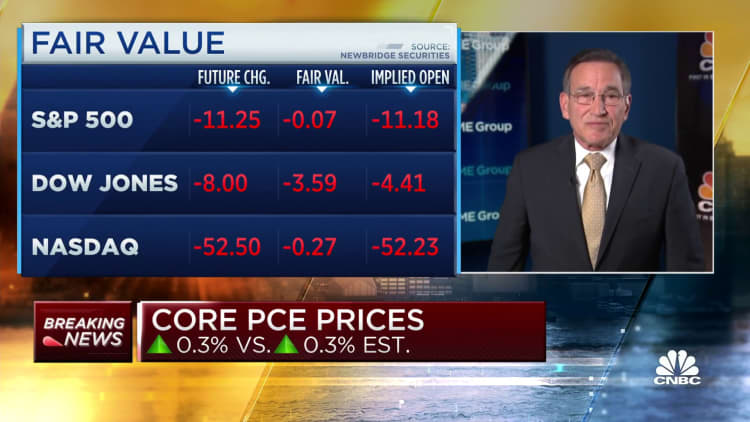
Consumers spent less in December even as an inflation measure considered key by the Federal Reserve showed the pace of price increases easing, the Commerce Department reported Friday.
Personal consumption expenditures excluding food and energy increased 4.4% from a year ago, down from the 4.7% reading in November and in line with the Dow Jones estimate. That was the slowest annual rate of increase since October 2021.
On a monthly basis, so-called core PCE increased 0.3%, also meeting estimates.
At the same time, consumer spending was even less than already modest estimates, indicating that the economy slowed at the end of 2022 and contributing to expectations for a 2023 recession.
Spending adjusted for inflation declined 0.2% on the month, worse than the 0.1% drop that Wall Street had been anticipating.
Personal income increased 0.2% for the month, as expected.
The numbers come with Fed officials closely watching to measure the impact their rate increases have had on the economy. In line with other recent economic data, they show inflation persisting but at a slower pace than the level that had driven price increases in mid-2022 to their fastest pace in more than 40 years.
However, the data also shows that consumer spending, which drives more than two-thirds of all U.S. economic activity, is waning. Adjusted for inflation, real consumer spending declined 0.3%.
“Even if real consumption returns to growth over the first few months of this year, the disastrous end to the previous…



























































